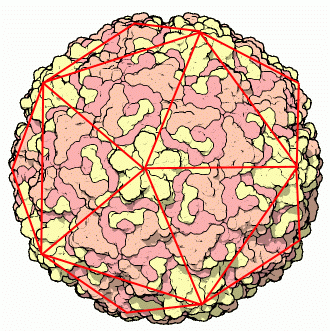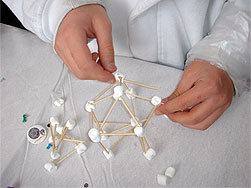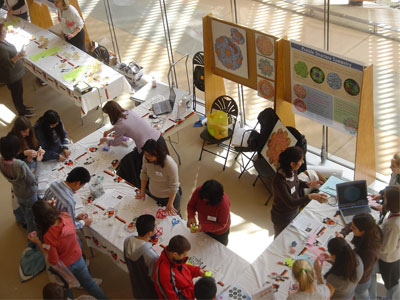
|
|
|
|
|
||
EDUCATION CORNER: Making viruses with middle school studentsThe RCSB PDB was a part of Princeton University's Science and Engineering Expo (SEE) on Thursday, March 17. More than 900 students from 11 area middle schools participated in a variety of demonstrations and hands-on activities that ranged from crawling exotic bugs to sheep brain dissection. The goal of the event was to expose these students, who are at an age where science may start to lose its appeal, to a vibrant look at science and technology. 
We wanted to demonstrate symmetry in protein structures, and selected a protein structure highlighted in the Molecule of the Month series that the students could relate to the virus. By having the students generate their own models of a virus structure, they were able to understand that many virus structures, such as the common cold, are icosahedrons. And since the structure is formed by repetition of the same protein (or group of proteins), it is a relatively simple and stable structure. Armed with Molecule of the Month printouts, posters, and two laptops, several annotators were able to help students create their viruses. Students had their choice of an edible virus, made out of toothpicks and marshmallows, or a paper virus that could be decorated with pens. 
The marshmallow virus was built by first creating a triangular face with 3 marshmallows and 3 toothpicks. It was then joined by 19 other faces to form the final structure. Using paper cut from a template, students artfully colored their virus papers, and then folded and glued to make a three-dimensional form. The kids were very enthusiastic about their creations, and walked around the event showing them off. Their teachers also responded to the activity, and appreciated how it combined biology with geometry. SEE was organized by the Department of Molecular Biology Outreach at Princeton.    
|
||
©2006 RCSB PDB |